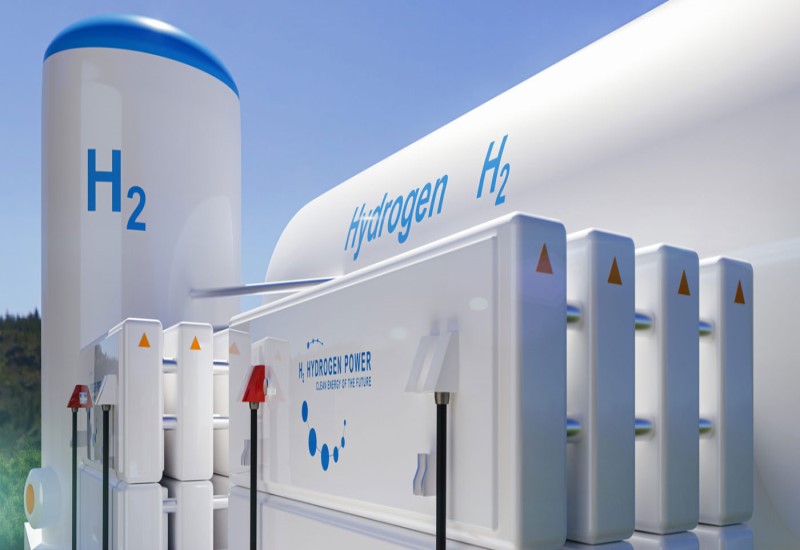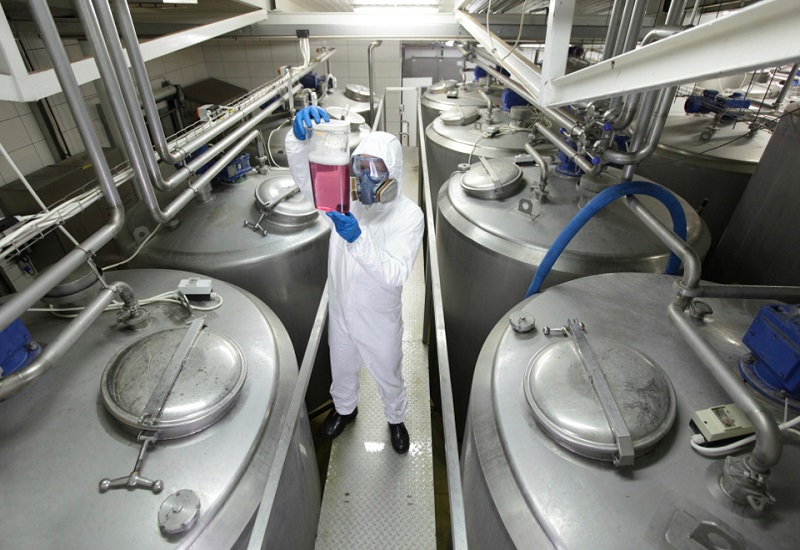







What is the concept of decentralized finance and how does it revolutionize traditional finance? How do DeFi platforms achieve scalability? Who are the key participants and what offerings do they provide? How does DeFi give users confidence and visibility into their money's circulation?

What are the primary drivers behind the widespread acceptance and advancement of next-generation nuclear hydrogen production technologies? Get a comparative analysis of different hydrogen production technologies, including technology descriptions, cost economies and more.

What are the differences between a vertical cavity surface emitting laser (VCSEL) and an edge-fired laser? How can VCSELs be used in time-of-flight (TOF) applications such as in-cabin sensing and LiDARs, as well as emerging applications like gesture recognition and people identification?

Hydrogen is a key part of the solution toolbox in achieving global decarbonisation. Policymakers are focused on creating the necessary framework for the hydrogen economy to flourish, investor appetite to back hydrogen initiatives is high, and industrial conglomerates are busy developing production, transportation, and storage solutions for commercialisation.
Schedule a dialog or email us at myfrost@frost.com to connect with an industry expert at no charge. We are taking unprecedented action to make our team available to help you cut through the media and politics to get factual one-to-one guidance for the issues and opportunities that matter most to your business.

Find out technologies that enable clean, lean and flexible manufacturing and industrial automation
Read more Request Info
Which innovations enhance smart sensors to go beyond traditional sensing capabilities?
Read more Request Info
Explore advancements in vapor deposition, water-based inks, packaging, 3D printing and more
Read more Request Info
Examine the use of seawater-based green hydrogen production, and lithium-sulfur batteries
Read more Request Info
Track development of standards, and software, also analyse legislative and policy issues
Read more Request Info
What are the breakthroughs in cryogenic systems, memristors, ethernet switches, and more?
Read more Request Info
How do zwitterionic co-polymer membranes improve super-filtration in industrial wastewater treatment?
Read more Request Info
Examine the developments like biosensors, biomaterials, biomechanics, nanotechnologies and more
Read more Request InfoRecently, Frost & Sullivan analysed the artificial intelligence (AI)-powered magnetic resonance imaging (MRI) reconstruction solution sector and, based on its findings, recognizes AIRS Medical with the 2023 North American Technology Innovation Leadership Award. The company offers AI-based diagnostic tests and robotic technologies to improve the patient and healthcare provider experience. Combining its award-winning deep learning technology with traditional MRI techniques such as parallel imaging and compressed sensing, SwiftMR™ denoises and sharpens the images, thus significantly improving image quality and overall radiologist interpretation.
Read more
Recently Frost & Sullivan analysed the bio-based polymer sector, and based on its findings, recognizes Itaconix Plc with the 2022 North American Enabling Technology Leadership Award. The company is a provider of sustainable specialty chemical ingredients for cleaning, beauty, and hygiene applications. Backed by world-class subject matter experts and driven by its vision of decarbonizing everyday consumer products, the company developed a pioneering proprietary process for itaconic acid polymer production. This technical breakthrough enables Itaconix to manufacture bio-based ingredients with unique functionality from itaconic acid that perform better than fossil-based acrylic acid polymers in many applications.
Read more
MRI scanner OEMs will soon face increased pressure to differentiate machines in their R&D pipelines with superconducting magnets, open designs, AI integrations and—maybe most challenging—potential for portability. These are among the gathering global factors newly discerned by Frost & Sullivan. The international business consultancy offered the observations Dec. 19 while announcing the availability of current sector analysis. Other key drivers of MRI change to look for between 2023 and 2027 include growing demands for faster scans and automated interpretation aids, the firm suggests. Meanwhile the aging but longevity-minded Baby Boomer generation is propelling MRI traffic while governments around the world move to “provide free or low-cost diagnostic facilities and infrastructure to citizens,” Frost & Sullivan states in a news release promoting a report based on the analysis.
Read more
The hydrogen economy, particularly blue and green hydrogen, is gaining popularity as a necessary component of the future clean energy ecosystem. Ammonia is one of the most feasible hydrogen storage solutions, overcoming traditional hydrogen storage challenges such as high flammability and low energy density. In short, it has the potential to become a significant renewable energy carrier capable of being stored, transported, and traded globally. Join our team to learn how ammonia manufacturers can collaborate with renewable energy developers and research universities to develop small-scale renewable generation facilities in-house. Anand S, Aarthi Janakiraman, Shrinivas Tukdeo, Amit Rawat.
Read more
Floating solar photovoltaics (FSPVs) are a game-changer in the renewable energy sector, according to the most recent analysis by Frost & Sullivan, Technological Advancements in Floating Solar Technologies. The conventional land-based solar power business is challenged by the rising prices of land acquisition brought on by the growing population. FSPVs, in this instance, do not require land and float on bodies of water, including reservoirs, hydroelectric dams, and artificial lakes. As a result, floating solar technology manufacturers have made significant investments in research and development (R&D) work to improve floating support materials, cutting-edge designs, mooring and anchoring technologies, and sophisticated sun-tracking systems.
Frost & Sullivan and Applied Risk, a DNV company, have joined forces to publish a new white paper outlining practical steps for designing, implementing, and maintaining sustainable operational technology (OT) cyber security programmes. Securing OT—the control systems that manage, monitor, automate and control industrial operations—is a growing challenge for companies with industrial operations. As OT becomes more connected and networked to IT environments, cyber criminals are increasingly gaining access to, and control of, industrial infrastructure. OT-reliant sectors, including manufacturing, energy, healthcare, and transportation, now appear within the top ten most-attacked industries. The risk of production shutdowns, safety incidents, process disturbance, and other service disruptions is consequently growing.
The strategic imperative for today’s businesses is to transform or risk disappearing. As competitive pressures intensify and new business models emerge and create disruption, the recipe for success remains simple. Sell more at a lower cost. However, companies increasingly realize that getting that recipe right requires improved technology, which means sufficient bandwidth, flexible provisioning, security, connectivity network solutions, and high availability.
Read more